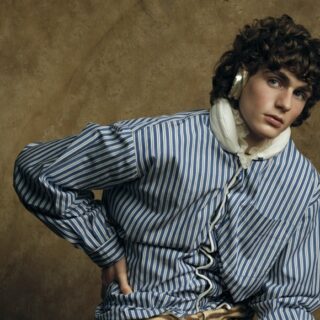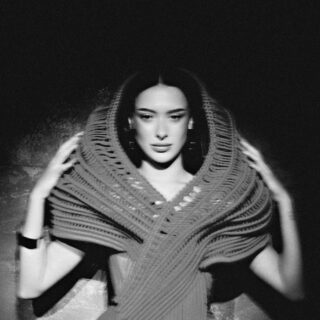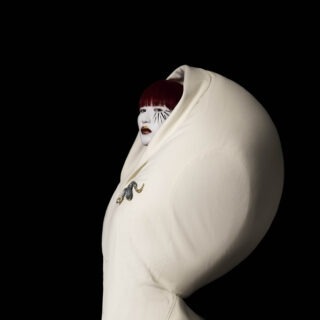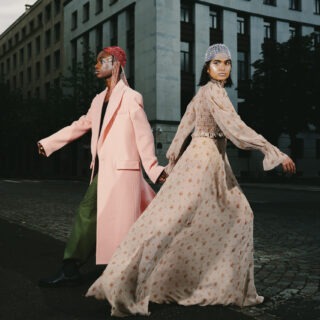words. Laura Knoops
photos. courtesy of Claudia Rafael
issue 3 – the water issue
What is your relation with A.I.?
”I am using AI like a painter using a brush.”
My AI paintings mostly use Style GAN 2 ADA, a network designed to reproduce images with high
accuracy. However, I approach it in an artistic and abstract way, using it as a tool for painting with
code. As an artist, I believe it’s important to guide the tool and determine its direction. After all, it’s
not just about the tool itself, but how it’s utilized.
Experimentation and curation are crucial to me, even when attempts deviate from the initial
intention but still hold value. These unpredictable moments often reveal beauty and excitement. I
believe new tools can alter aesthetics and streamline processes, as demonstrated by the inventions
of printing and photography, which led to new fields and aesthetics. Despite this, traditional art forms such as painting still exist alongside digital art, and I don’t think one will replace the other.
A.I. Beauty Portraits is an investigation of how digital tools can transcend social norms on beauty and offer new possibilities of self-agination – can you tell us more about your process?
Collaborating with collage artist Mat Mailand, we showcase how AI can force its own evolution and turn traditional norms into a more adaptable and flexible vision. Each portrait in the series showcases a metamorphosis of modulating colors that dissolve into physical traits that define an individual. The idea of self is continuously growing and expanding, offering a new way to create a differentiated beauty that lives in one’s body and mind. Through working with AR, AI, and Beauty Editorials, I had the opportunity to explore the concept of beauty with futurologist Ludwig Engels. We questioned whether technology has changed our perception of beauty or if it simply looks different. We also considered how our digitally enhanced lives affect our offline identities and our perception of beauty. We concluded that today’s beauty is about otherness, where being different is a strategy for distinction and a way to create unique beauty. Digital tools allow individuals to express their own idea of beauty.
Could you provide insight into the creative process behind Alison Goldfrapp’s debut single So Hard So Hot directed by and in collaboration with Mat Maitland?
The latest music video for Alison Goldfrapp’s debut single “So Hard So Hot” involved the use of A.I. combined with set visuals created by Mat Maitland. We utilized AI to process and retouch everything, using STABLE Diffusion. After brainstorming prompts, we combined various elements in the project. Despite conducting numerous tests, the entire process only took a few weeks and proceeded quickly.
If you were able to build your own tools, what would you do? With which adjectives would you define this tool?
I would build a customized ChatGPT tool based on specific text input that I select. ChatGPT is an AI model trained to follow instructions in a prompt and provide a detailed response. It works by accessing and gathering data from the whole internet and using computing predictions to answer questions inputted by the user. The problem we face here is that this is a data-centered approach to information that already exists. Meaning the data in the world that is already out there, the data from the past provides the basis for future statements. In this way, fact becomes
the norm. This AI is not able to know if facts are true or false and the whole area of responsibility or the impact of words in communication is missing. This is why I would like to work on a ChatGPT tool that only learns from specific text and information. As such, I believe it’s always essential to create novel ideas and critically evaluate readily available data. Speaking about visual creation, I can’t wait to work with one of the latest developments of
combining StyleGAN and Stable Diffusion.
words. Laura Knoops
photos. courtesy of Claudia Rafael
© Schön! Switzerland. All rights reserved.






